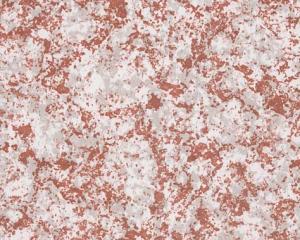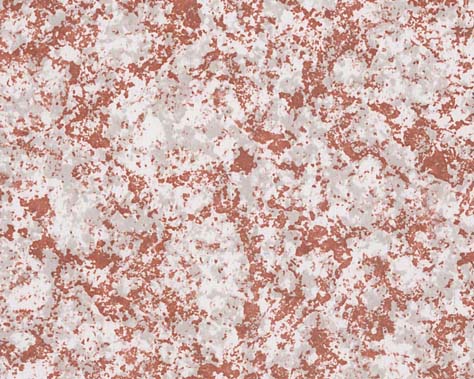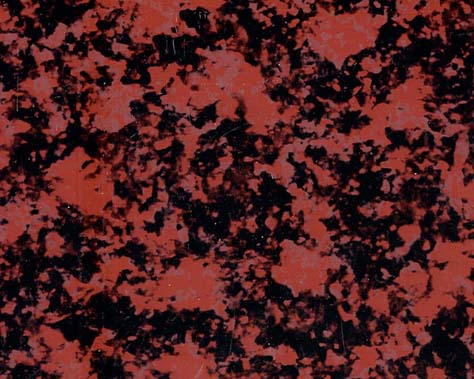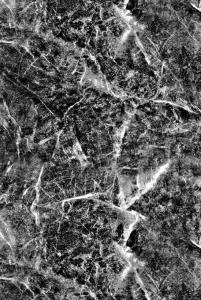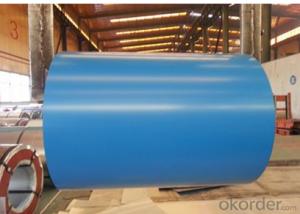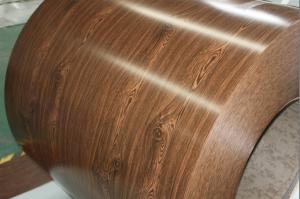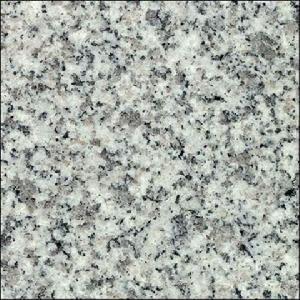Pre-painted Galvanized Steel Coil-EN10169-STONE 1
- Loading Port:
- Shanghai
- Payment Terms:
- TT OR LC
- Min Order Qty:
- -
- Supply Capability:
- 2000吨 m.t./month
OKorder Service Pledge
OKorder Financial Service
You Might Also Like
Pre-painted Galvanized Steel Coils/ PPGI/GI
I Specifications:
1.Thickness:0.16-2.0mm
2.Width:600-1500mm
3.Material: SGCC,SGCD,SECC,SECD,DX51D+Z
4.Zinc coating:40-275G/M2
5.Surface Structure: galvanized ,zero spangle, regular spangle or normal spangle
6.Surface treatment: chromated and oiled, chromated and non-oiled
7.Color:all RAL series
II Main characteristics :
1.strong corrosion resistance
2.surface quality
3.conducive to deep processing,such as the embossed PPGI,printed PPGI&punching PPGI
4.economy and practicality
III Applications:
Household Appliance:
1.Refrigerator shutter &side panels, Washer, Freezers, Air conditions,
2.Rice Cooker, Microwave Ovens, Water Heaters, Sterilization Cabinets, Range Hoods
3.Computer Panels , DVD/DVB panels, TV back panel etc.
Teaching Board: whiteboard, blackboard, green board(chalk board).
Indoor Decoration: Fireproof Door, kitchen cabinet, wall decoration.
Shipping Industries: Ship, Fecht, Marine.
Elevator/Medical Equipment/Rubbish Bin.
Thickness:0.17mm-0.8mm
Width:600mm-1250mm
Prepainted Galvanized Steel Coil
- Q: What are the different types of steel finishes available for coils?
- There are several types of steel finishes available for coils, including hot rolled, cold rolled, galvanized, and stainless steel. Hot rolled steel has a rough surface and is often used for structural applications. Cold rolled steel has a smoother surface and is commonly used in appliances and automotive parts. Galvanized steel has a protective zinc coating to prevent corrosion and is used in outdoor applications. Stainless steel is resistant to corrosion and staining, making it suitable for food processing and medical equipment.
- Q: Fallout 3 take it back quest?if i am in the rotunda and dont have broken steel installed yet so i cant leave if i instal it will i be able to continue the game even if im seconds away from the end without it Additional Detailsi know it continues on but im not sure if it will let me cause i got this far without it 1 objective away from finishing the quest idk if it will change that little bit so i can continue (ps3)already in the purifier place kill col. autum liek i said just gotta do the code thing to it idk if im to far for broken steel to effect this save file
- Yes. The Broken Steel add-on goes automatically where ever you are. The thing is, I would like stand around the control room for a little while until the Broken Steel add-on is completely downloaded (Basically pop A LOT of rad-x and radaway). You should see a pop-up message saying that Broken Steel is installed and the level cap is now at 30.
- Q: How are steel coils used in the manufacturing of industrial machinery?
- Steel coils are used in the manufacturing of industrial machinery as they serve as the primary raw material for various components such as frames, casings, gears, and structural supports. These coils are typically cut, shaped, and welded to create the desired machine parts, ensuring strength, durability, and precision in the final product.
- Q: What are the different types of steel coil slitting blades?
- Different types of steel coil slitting blades are available to suit specific applications and materials. The following are some commonly used types: 1. Circular slitting blades: These blades, which are circular in shape, are widely used for slitting steel coils. They have a sharp edge that cuts through the coil as it rotates. The choice of material for circular slitting blades, such as high-speed steel or tungsten carbide, depends on the desired cutting performance and durability. 2. Arbors: Arbors are cylindrical blades used in conjunction with circular slitting blades. They hold the circular blade in place, allowing for precise and consistent slitting of the coil. 3. Shear slitting blades: These blades are used for cutting thicker and harder materials like stainless steel or aluminum. They have a straight edge and work by shearing the material apart, rather than cutting through it like circular blades. Shear slitting blades are typically made from high-quality tool steel to withstand the high forces involved in cutting thicker materials. 4. Crush cut slitting blades: Crush cut blades are suitable for slitting softer materials like paper or plastic. They have a blunt edge that crushes and tears the material instead of cutting it cleanly. Crush cut blades are often made from materials like carbon steel or hardened stainless steel. 5. Razor slitting blades: Razor slitting blades are ideal for slitting delicate materials that require a clean and precise cut, such as thin films or foils. They have an extremely sharp edge that slices through the material without causing any damage or distortion. Razor slitting blades are typically made from high-quality stainless steel or tungsten carbide. Choosing the right type of steel coil slitting blade is crucial and depends on factors such as the specific application, material, and desired cutting performance. The blade selection significantly affects the quality and efficiency of the slitting process.
- Q: This EN10025 S355JR is a European code for steel, of which the properties can be found here.
- *EN 10 025 S355JR/JO is comes under structural steel catagories. Equivalent standard is-ASTM A 572 Gr 50. -Above areHigher strength micro-alloyed steel. -The above-mentioned structural steel grades may be welded using any of the standard metal arc and resistance welding processes, usually without any special precautions.
- Q: How are steel coils used in the manufacturing of agricultural irrigation systems?
- Steel coils are used in the manufacturing of agricultural irrigation systems as they are shaped and formed into various components such as pipes, tubes, and fittings. These coils provide strength, durability, and corrosion resistance, ensuring the longevity and reliability of the irrigation system.
- Q: How do steel coils contribute to energy efficiency in buildings?
- Steel coils contribute to energy efficiency in buildings in several ways. Firstly, steel coils are used in the construction of insulated panels and roofs, which provide effective thermal insulation. This insulation helps to reduce heat transfer, keeping the interior of the building cool in hot weather and warm in cold weather. Additionally, steel coils are often used in the manufacturing of energy-efficient windows and doors. These windows and doors are designed to minimize heat loss or gain, thereby reducing the need for heating or cooling systems and saving energy. Furthermore, steel coils are also utilized in the production of energy-efficient appliances, such as refrigerators and air conditioners, which consume less electricity while providing the same level of performance. Overall, the use of steel coils in building construction and appliances contributes to improved energy efficiency, reducing energy consumption and promoting sustainability.
- Q: I really need help what is the origon of stainless steel?
- In metallurgy, stainless steel, also known as inox steel or inox from French inoxydable, is a steel alloy with a minimum of 10.5% chromium content by mass.
- Q: How are steel coils weighed?
- Steel coils are typically weighed using industrial weighing scales or load cells. The coils are lifted by cranes or forklifts and placed on the scales or load cells to determine their weight.
- Q: Hi, I need to know why stainless steel is rust proof please tell me its for my science project. :)
- Stainless steel is an alloy of iron and other metals, notably Chromium and vanadium. You do not see it with the naked eye but at the surface of any stainless steel (SS) there are iron atoms and chromium atoms that are exposed. However, the chromium reacts preferentially to form an oxide. In essence, think of chromium sacrificing itself for iron so that iron will not rust. What a nice guy huh! This is called passivation just like most responders said. However, more than that the chromium oxide forms a tight protective layer that forms a physical barrier preventing Oxygen or any oxidant to reach and attack the iron underneath it. Also, the chromium oxide formed is not FLAKY and porous, so it does not mar much of the surface as an iron oxide (rust) would. For science project, you may not make it too technical but you can make a reference or make an ANALOGY of rust prevention to high school or social situations as being there for your friend or classmate But in real life, when the odds are too great, that protection afforded by chromium may not be enough. Because eventually all steel exposed to very oxidizing atmospheres will rust. Just a little break in the surface is enough to start the process of rusting.
Send your message to us
Pre-painted Galvanized Steel Coil-EN10169-STONE 1
- Loading Port:
- Shanghai
- Payment Terms:
- TT OR LC
- Min Order Qty:
- -
- Supply Capability:
- 2000吨 m.t./month
OKorder Service Pledge
OKorder Financial Service
Similar products
Hot products
Hot Searches
Related keywords
